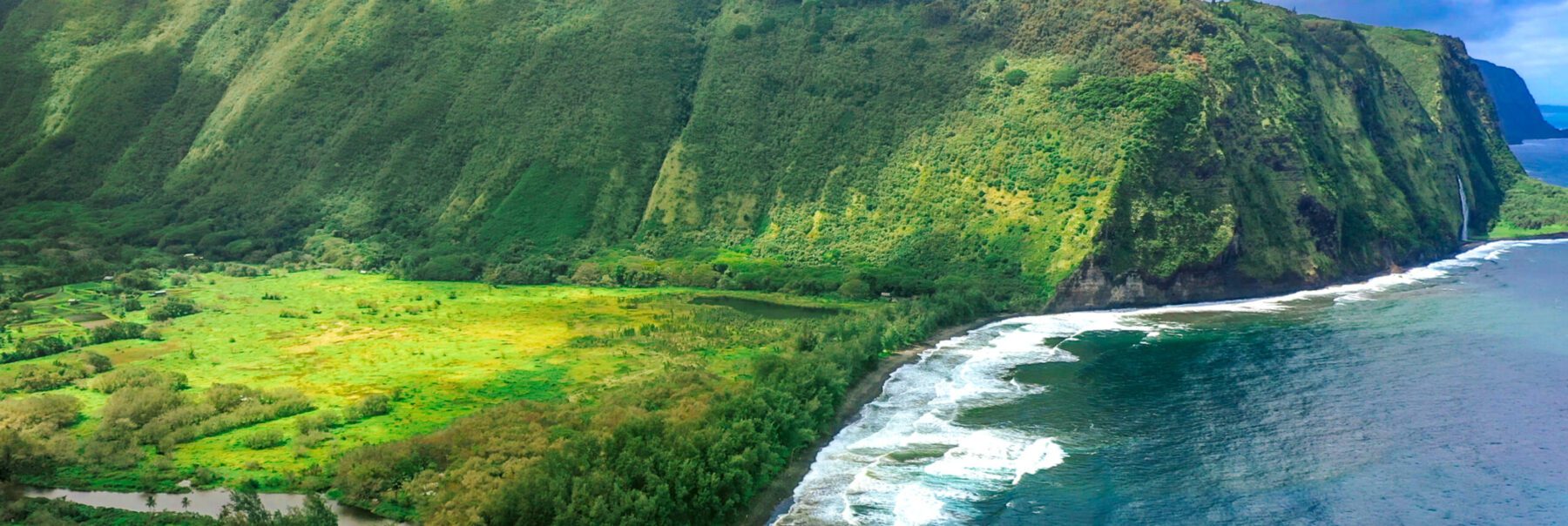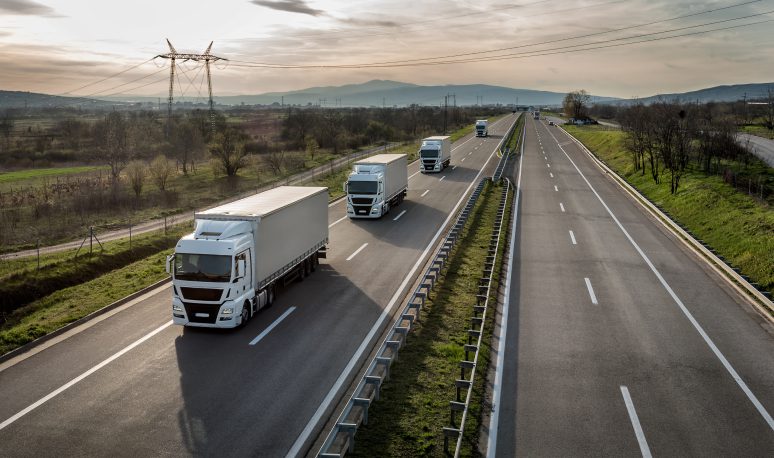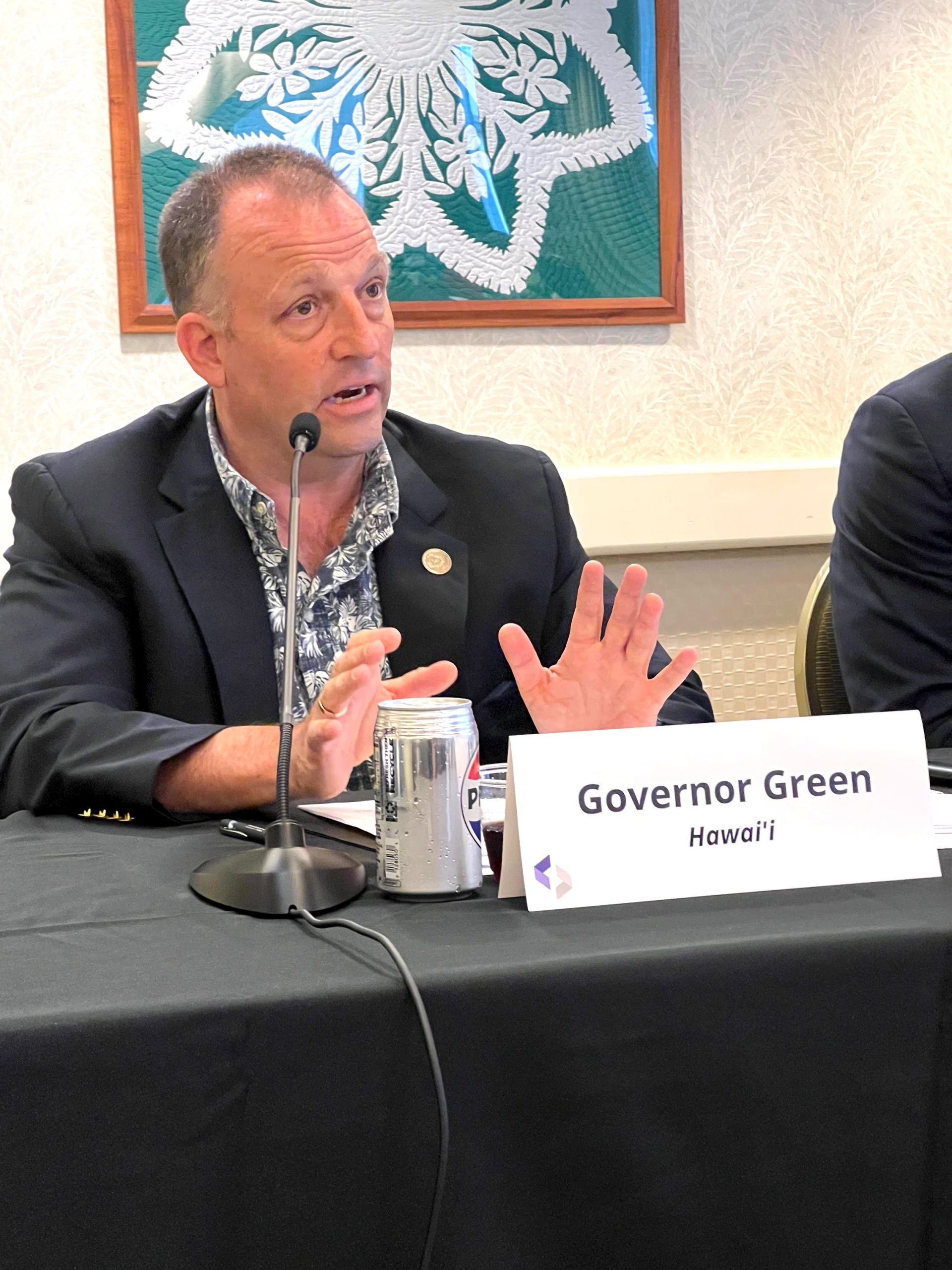
Hawai‘i CLEAN ENERGY INITIATIVE
HCEI OVERVIEW
The Hawai‘i Clean Energy Initiative (HCEI) is a framework of statutes and regulations supported by a diverse group of stakeholders committed to Hawai‘i’s clean energy future. The initiative was launched in 2008 when the State of Hawai‘i and U.S. Department of Energy signed a groundbreaking Memorandum of Understanding to collaborate on the reduction of Hawai‘i’s heavy dependence on imported fossil fuels. In 2008, the state estimated that 60 to 70 percent of future energy needs could be fulfilled by local, clean, renewable energy sources, including energy efficiency. To turn this vision into reality, HCEI is transforming the financial, regulatory, legal, and institutional systems that govern energy planning and delivery within the state. The initiative has grown stronger over the course of three gubernatorial administrations. In 2023, Governor Josh Green renewed Hawai‘i’s commitment to achieve the nation’s first-ever 100 percent renewable portfolio standards (RPS) by the year 2045, issuing an Executive Order in January 2025 to accelerate the transition. In October 2025, the state signed a Strategic Partnering Agreement with JERA, Japan’s largest power producer, to modernize grid infrastructure, accelerate the retirement of aging assets, and enhance system reliability and resilience.
HRS section 196-10.5 Hawai‘i clean energy initiative program
Memorandum of Understanding Re-commitment, 2014 (PDF)


GOALS AND OBJECTIVES
The goal of the Hawai‘i Clean Energy Initiative is to achieve 100 percent clean energy by 2045. Through collaboration between thought leaders and committed groups and individuals, HCEI builds upon the dynamic, ongoing work of public and private organizations at the national, state, and county levels to achieve the following key objectives:
- Define the new infrastructure needed to move Hawai‘i to a clean energy economy.
- Foster and demonstrate innovation in the use of clean energy technologies, creative financing, and public policy to accelerate our transition to clean energy.
- Create economic opportunity by developing and diversifying Hawai‘i’s economy so all of us reap the benefits of a sustainable energy policy.
- Establish an “open source” learning model that supports other island communities seeking to achieve similar goals and makes Hawai‘i a world model for clean energy-based economies.
- Build our workforce with new skills that will form the foundation of an energy-independent Hawai‘i.
PROGRESS TO DATE
HCEI has implemented many of the foundational policies and innovative solutions needed to reduce our dependency on foreign oil, maximize our diverse portfolio of natural resources, and create employment and investment opportunities throughout the islands. Our state has earned recognition as a clean energy leader and must continue to embrace innovative technologies and thoughtful decision-making.
Significantly, many goals have been achieved. In 2018, two major policies of the nascent Hawaiʻi Clean Energy Initiative were adopted by the Hawaiʻi Legislature—a 40% renewable portfolio standard and an energy efficiency portfolio standard to achieve a 30% or 4,300 GWh reduction in electricity demand relative to a 2008 baseline by 2030.
The same year, a market structure was established for distributed energy resources including distributed generation, energy efficiency, demand response, electric vehicles, and distributed energy storage. An EoT Roadmap was introduced to include electrification of transportation for Oahu and ten initiatives aimed at accelerating the adoption of EVs in Hawaiʻi.
In 2019, six grid-scale solar-plus-battery storage projects, the largest and lowest-cost portfolio of renewable energy resources to be assembled at one time in Hawaii, were approved by the Public Utilities Commission (PUC). Despite supply chain slowdowns caused by the global pandemic, more are coming online, with AES Hawaiʻi announcing the commencement of operations at Hawai’i’s largest utility scale solar facility – Kūihelani Solar-plus-Storage, supplying 15% of Maui’s energy needs and offsetting the need to import two million barrels of oil.
In 2022, Hawaiʻi’s last remaining coal plant was decommissioned, stimulating more analyses and strategic thinking on an appropriate balance of renewable resource and technologies to reach increasingly higher rates of renewable penetration. Also in 2022, Kauaʻi Independent Utilities Cooperative (KIUC) reached a 69.5% RPS 18 years in advance of the 2040 statutory requirement.
In 2024, Governor Josh Green announced the landmark resolution of the Navahine v. Hawaiʻi Department of Transportation constitutional climate case, acknowledging the constitutional rights of Hawaiʻi’s youth to a life-sustaining climate, and confirming the state’s commitment to implement transformative changes of Hawaiʻi’s transportation system to achieve the goal of net-negative emissions by 2045.
In January 2025, Governor Green issued Executive Order 25-01, accelerating Hawaiʻi’s energy transition to achieve 100% renewable electricity production in the counties of Hawaiʻi, Kauaʻi, and Maui by 2035, and achieve 70% reduction of Oʻahu’s greenhouse gas emissions reductions from the electricity sector by 2035, using 2005 as a baseline.
Challenges remain. The energy transition is not inevitable. Built on the foundation of our invaluable relationship with the U.S. Department of Energy and other key stakeholders, HCEI will continue to serve as a guiding force as we face the challenges of transitioning to a 100 percent clean energy future.

“We don’t have to choose between growing our economy and addressing climate change. We can and must do both at the same time. As we rebuild in the aftermath of the Maui wildfires, we will make historic, transformative public and private investments to launch a clean energy revolution that will lead the nation and the world in addressing the climate crisis.”
Governor Josh Green, M.D.

